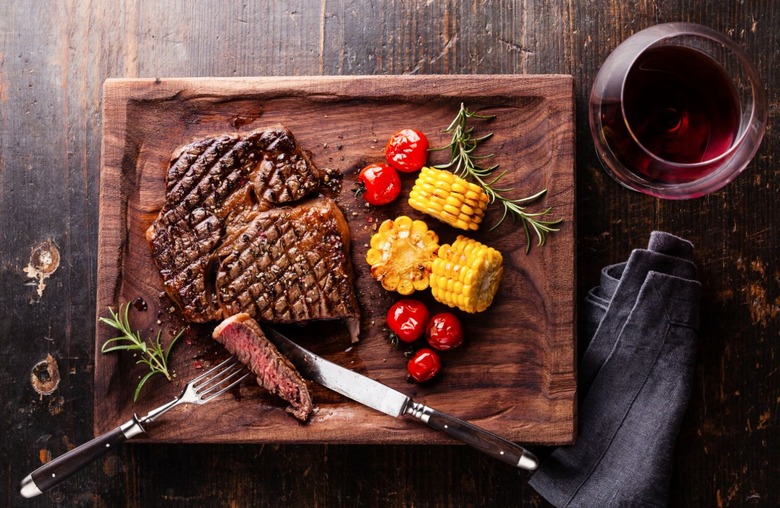Why Does Dry-Aging Make Steak Taste Better?
We all know that if you want a really spectacular steak (as opposed to the same ho-hum one that you'll find at your local supermarket), then you need to go to a steakhouse and get one that's been dry-aged, preferably for at least a few weeks. Eat a steak that's been properly dry-aged and there's really no competition: It has a richer, beefier flavor, a more tender, more buttery texture, and a minerally, slightly funky scent. Dry-aged beef puts all other steaks to shame. But why does letting meat sit in a climate-controlled room for a month improve it so much?
Needless to say, the exact reasons are pretty complex. But we'll help put it in layman's terms. Two major things happen when you allow a slab of beef to dry-age. First, naturally-present enzymes in the meat break down some of the collagen, which holds muscle fibers together and causes steaks to toughen while cooking. With collagen out of the way, the end result is much more tender. Second, beef loses about 15 percent of its total weight during the aging process due to water evaporation, so the flavor will be much more concentrated and intense. The longer the beef is allowed to dry-age, the more water it loses and the more intense the flavor will be; some restaurants serve steaks that have been dry aged for 100 days or longer. Yes, a layer of mold will form on the outside of the meat (similar to what happens to cheese as it ages), but it's all cut away long before it reaches your plate.
These are just a couple of the reasons dry-aged steak tastes better, but there are plenty of other enzymatic reactions that go on inside the meat itself to give it that robust, beefy minerality that connoisseurs love. If you love steak but you've never had one that's been dry-aged, we suggest you start saving up for your next special-occasion meal now.
